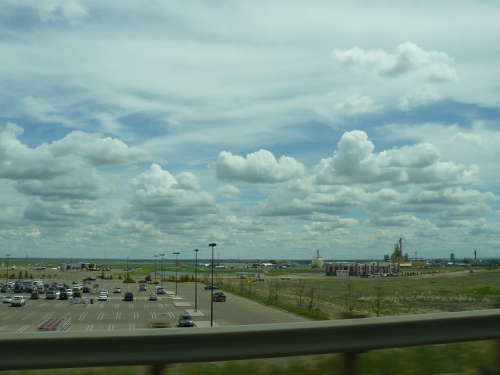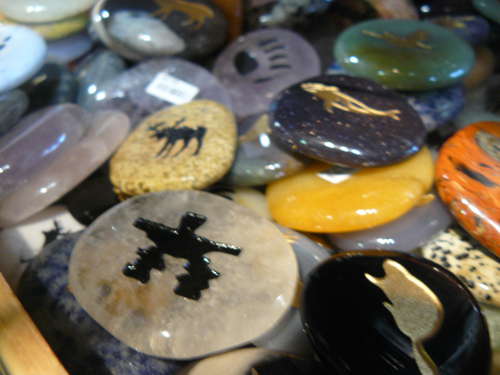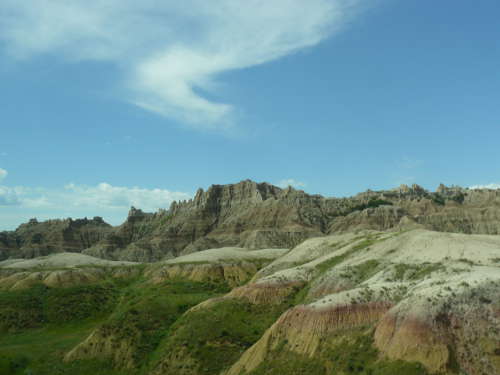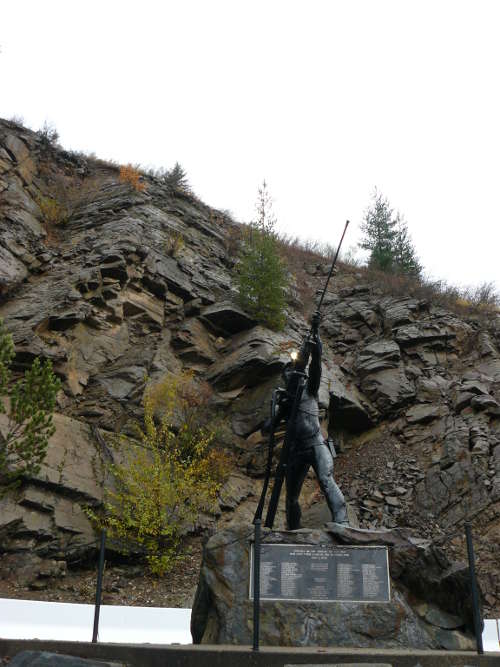 Location Taken: Near Kellogg, Idaho
Location Taken: Near Kellogg, Idaho
Time Taken: October 2012
May 2nd, 1972. It was a fairly normal day of work at the Sunshine Mine in Idaho’s Silver Valley, and 174 men were doing their jobs carving out ore. One of the world’s largest silver mines, people had been pulling ore out of that place since 1884, and had followed the vein from the surface to nearly 6000 feet underground.
The Sunshine was a maze of played out tunnels and shafts, with more than ten main vertical shafts going between a multitude of levels. But then, any mine that’s ninety years old and following a lode of silver many miles large would be just as intricate. To keep things simpler, they sealed off the abandoned tunnels with lumber and polyurethane foam, highly touted by the salesmen as fireproof and completely safe for mines, and they created a main area at the 3700 level, which had a connection between the shafts coming down from above that contained the main hoists and the working shafts that brought people to their work areas in the active areas further underground.
It was around noon when the first hints of smoke were noticed.
The miners weren’t too worried. Smoke wasn’t uncommon. Small electrical fires were just a fact of life when you’ve got a vast network of machinery in heavy use. Besides, this was a hard rock mine, not a coal mine or anything like that. Rock didn’t burn, so they just figured it would burn itself out soon.
But the smoke kept thickening. It was soon clear that there was a real problem, and the shift leaders on each active level sent out runners to collect everyone for an evacuation.
Communication in those days was still a fairly simple thing. There was a single phone on each active level, all hooked into the same network, and everything else was done by finding the people physically. Some extra time was wasted just from the leaders having to figure out who to send where before the runners were sent. Even more was wasted because that telephone system could only be used for one conversation at a time, so communication between levels was difficult.
There were two ways of getting up to the surface from the depths the miners were at. At the 3700 level, there was the main hoist that could carry 48 people, and at the 3100 level, a hoist primarily used for the ore also had a small 9-person cage. The miners were directed to the closest shaft to them, where they rang a bell to tell the person running the hoist that they were waiting.
As you may imagine, trying to funnel 174 people upwards when you can only haul a maximum of 57 people at a time was an arduous process. Of course, the 48-person one was rarely close to its maximum, since waiting for it to fill before hauling a group up was counter-productive. And once you got to the top of either hoist, you still had to travel along that level for upwards of a mile to reach the next shaft up. And the smoke kept getting thicker, and blacker, and the air became tougher and tougher to breathe.
The rebreather had been invented at that point, but it was still fairly primitive compared to today’s models. The mine had purchased many of these devices for filtering the toxic gases out of the air, and stored them by the hoists. But no one at the mine had been overly concerned about fire. Cave ins and other mine hazards, those the miners paid attention to safety regulations about, but fire? This was a hard rock mine, there wasn’t anything to burn down there!
So the rebreathers rusted to the point of being tough to start and the men barely knew how to use them. Enough did that the people waiting by the shafts were able to manage fairly well, but the devices got rather hot and the miners would take them off to let them cool, and just sit and chat in the black smoke. The hoists went up and down, pulling groups of men out as fast as they could.
All the shift leaders focused on getting their men out alive, and rushed everyone to the two hoists in a calm but hurried fashion. There was no panic, everyone knew that things were under control. They kept telling themselves, rock doesn’t burn, it may look bad, but things will be fine.
Then the people around them started passing out.
Ninety-one people died that day, most of them from carbon monoxide poisoning.
You remember that “fireproof” polyurethane foam I mentioned? Yeah, it’s not so much fireproof, more along the lines of “burns like crazy”. Tests that were done later showed that it went up furiously, “liquid gasoline” one researcher called it, and it puts out that thick black smoke that makes it so you can’t see anything. The gasses coming out of it are just filled with deadly carbon monoxide, a scentless invisible gas that prevents your body from using oxygen, leading to quick unconsciousness and death. And to cap it all off, another toxic compound in the mix would actually paralyze you just enough to let the carbon monoxide do its work.
There were many heroes that day, bringing down working respirators and organizing the evacuation. Many of them died. As did all of the shift leaders, who wouldn’t save themselves before their people were safe.
Those who were sent to the nine-person hoist on the 3100 level were the lucky ones. The fire started on the 3400 level, and the 3700 level just filled with deadly gasses. Before long, the hoist driver there was dead, and no more people made it out that way. But the 3100 level was above the fire, and the air stayed clearer. For a while at least.
Above ground, anxious family members, hearing rumors of a fire, gathered around the mine entrances. The smoke pouring out of the ventilation shafts only added to the worries. At first, group after group of miners came out, but soon that trickled to an occasional group, and then stopped. And less than half the miners were above ground.
Now, as soon as the evacuation started, rescuers with far more sophisticated breathing gear got to work. The mine had its own small group, if a fairly inexperienced one, and people were called in from other mines in the area. They saved many lives, but for many it was too late. The rescuers would delve into the depths and come across people hidden in the smoke, apparently just laying there or leaning against each other, stone dead. Bodies were brought up at first, but soon the focus switched entirely to hunting for survivors.
It was horrifying for those rescuers. These bodies were their friends, their family, and they had to just walk past them hoping for any glimmer of hope in the smoky darkness. In some places, the bodies were literally piled on top of one another, a group waiting for a lift that never came.
But that glimmer of hope was out there. Eight days after the fire, the rescuers managed to reach an underground borehole, drilled in preparation for another shaft, that happened to funnel fresh air down into the lowest levels. They knew if anyone had survived, they would be waiting by that. A special machine was procured that could go down the borehole, and a rescuer sent down.
And sure enough, at the 4800 level, two miners were hanging on to dear life. Ron Flory and Tom Wilkinson were mining partners, waiting with a group at the hoist station hoping the cage would get there soon. Then Tom passed out. Ron and several others helped him over to an area of fresher air by the borehole. Ron stayed to assist Tom while the others went back to get the rest of the group. They never returned.
Ron and Tom waited for rescue, knowing that things had gone very wrong. They stayed in the fresh air, and tapped into a water line, but had nothing to eat, and the days slowly passed by, and they had been in the dark depths for more than a week. And then a light came down the borehole.
The crowd of people up top were ecstatic to see them hobble out of the mine. Many people had just camped out by the mine, waiting for any word of their loved ones and knowing it would likely be bad news. For Ron and Tom’s families, a miracle had occurred. But for far too many others, they were just waiting to receive their dead.
The mine itself was closed for months, as the smoke was finally cleared out and the burned remains of machinery were replaced. It was never the same again, as most of the leadership had died in the disaster. The disaster lead to a slew of additional safety regulations, including requiring that every miner carry a personal rebreather, called a self-rescuer, with them at all times, with lots of training to go along with it. And a memorial was built, a statue with the ninety-one names engraved on a plaque, to remember those who had been lost. It sits right off an exit on Interstate 90, not too far from the mine itself.
If you want to know more, including many harrowing personal stories, I recommend this video put together by the National Institute for Occupational Safety and Health. That’s where I got a lot of this information, and it’s a rather well done documentary. And to think, I would have not a clue any of this had ever happened if I hadn’t pulled off at that highway exit for a stretch break…
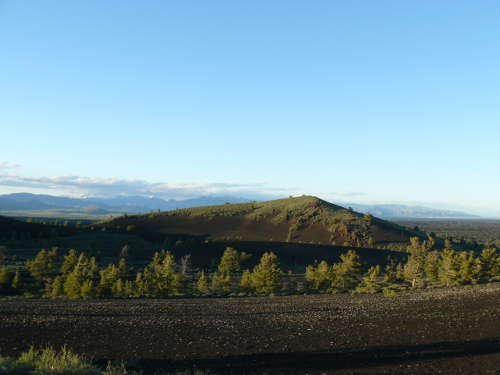 Location Taken: Craters of the Moon National Monument, Idaho
Location Taken: Craters of the Moon National Monument, Idaho

